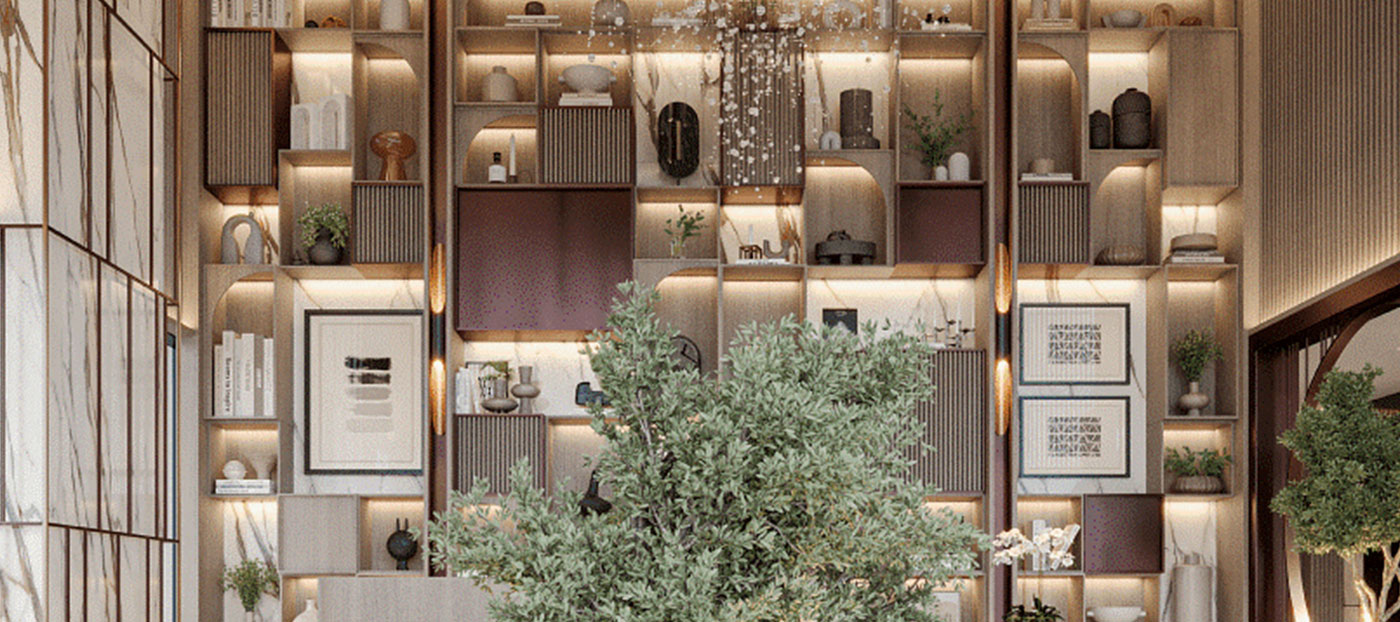

The Psychology of Color in Interior Design: Creating Harmonious Spaces
When it comes to designing an interior space, color plays a vital role beyond aesthetics. The colors we choose for our living spaces have a profound impact on our emotions, mood, and overall well-being. Understanding the psychology of color in interior design can help us create harmonious and inviting environments that reflect our desired atmosphere. In this blog, we will explore the psychological effects of different colors and how they can be utilized effectively in interior design.
Warm Colors: Warm colors such as red, orange, and yellow evoke feelings of energy, passion, and enthusiasm. They create a sense of warmth and coziness in a space. These colors are perfect for areas where social interaction and activity take place, such as living rooms or dining areas. However, it’s important to use warm colors in moderation as they can be overwhelming if used excessively. The Grove by Iman Developers has captured the perfect balance of warm colors to reflect the comfort it offers.
Cool Colors: Cool colors like blue, green, and purple have a calming and soothing effect on our minds. They promote relaxation, tranquility, and a sense of harmony. These colors are ideal for bedrooms, bathrooms, or any space where you want to create a peaceful atmosphere. Cool colors can make a room appear larger and more spacious, making them an excellent choice for smaller areas. An amazing property that has used a blend of cool colors is Oxford Terraces, invoking a sense of serenity in everyone on its premises.
Neutral Colors: Neutral colors such as white, beige, and gray provide a versatile backdrop for any interior design scheme. They convey a sense of simplicity, elegance, and timelessness. Neutral colors are often used as a base color, allowing other elements in the room, such as furniture or artwork, to stand out. These colors are perfect for creating a minimalist or contemporary look and can also be used to balance out bolder color choices. Oxford 212 is the perfect example of a property that has imbibed neutral colors to accentuate its grandeur.
Accent Colors: Accent colors add visual interest and personality to a space. They are typically bolder and more vibrant than the primary colors used in the overall color scheme. Accent colors can be incorporated through accessories, accent walls, or furniture pieces. For example, a pop of red in a predominantly neutral room can create a focal point and add a sense of excitement.
Cultural and Personal Influences: It’s important to consider cultural and personal preferences when selecting colors for interior design. Different cultures associate different meanings with colors, so it’s essential to understand the cultural context before incorporating specific colors. Additionally, personal experiences and associations with colors can vary, so it’s crucial to choose colors that resonate with the occupants of the space.
Conclusion: Incorporating the psychology of color in interior design can significantly impact the overall ambiance and functionality of a space. By understanding the emotional and psychological effects of different colors, we can create environments that promote well-being, harmony, and reflect our desired lifestyle. Whether you prefer warm, cool, or neutral tones, finding the right color scheme that aligns with your vision and purpose will result in a truly personalized and inviting space. So, go ahead, explore the world of colors, and transform your interiors into a reflection of your unique style.